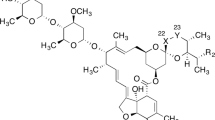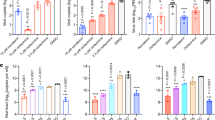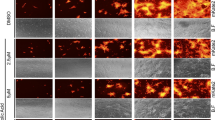Abstract
RIFAMPICIN1 is a clinically useful, orally active antibiotic2, synthesized from rifamycin SV(ref. 3), a product of Streptomyces mediterraneans. This antibiotic is effective in the treatment of a number of bacterial infections, especially in tuberculosis2,4; it has also been shown to inhibit the replication of poxviruses in tissue cultures5–9. Further studies have indicated that the antiviral effect of rifampicin is selective in that it does not affect uptake into cells of some precursors, and also in that viruses other than poxviruses can replicate in the presence of the drug5,10. The mechanism by which the selective antiviral effect is mediated seems to involve an inhibition of late viral protein synthesis11, virion assembly12 and possibly also the de novo synthesized viral polymerase13. More recent experiments (to be published) have shown that rifampicin inhibits the formation of lesions resulting from infection with vaccinia virus on the chorioallantoic membrane of embryonated eggs, and on the skin of rabbits, when the drug is locally applied.
This is a preview of subscription content, access via your institution
Access options
Subscribe to this journal
Receive 51 print issues and online access
$199.00 per year
only $3.90 per issue
Buy this article
- Purchase on Springer Link
- Instant access to full article PDF
Prices may be subject to local taxes which are calculated during checkout
Similar content being viewed by others
References
Maggi, N., Pasqualucci, C. R., Ballotta, R., and Sensi, P., Chemotherapia, 11, 285 (1966).
Lepetit Pharmaceutical Ltd (Slough), Handbook on Rifadin (Rifampicin) (1969).
Sensi, P., Margalith, P., and Timbal, M. T., Il Farmaco, 14, 146 (1959).
Daniel, T. M., New Engl. J. Med., 280, 615 (1969).
Heller, E., Argaman, M., Levy, Helen, and Goldblum, N., Nature, 222, 273 (1969).
Subak-Sharpe, J. H., Timbury, M. C., and Williams, J. F., Nature, 222, 341 (1969).
Editorial, Nature, 222, 218 (1969).
Editorial, Lancet, i, 976 (1969).
Editorial, Brit. Med. J., 1, 588 (1969).
Heller, E., First Lepetit Colloquium on RNA Polymerase and Transcription (edit. by Silvestri, L. G.), 287 (North-Holland, Amsterdam, 1970).
Ben-Ishai, Z., Heller, E., Goldblum, N., and Becker, Y., Nature, 224, 29 (1969).
Moss, B., Rosenblum, E. N., Katz, E., and Grimley, P. M., Nature, 224, 1280 (1969).
McAuslan, B. R., Biochem. Biophys. Res. Commun., 37, 289 (1969).
Author information
Authors and Affiliations
Rights and permissions
About this article
Cite this article
MOSHKOWITZ, A., GOLDBLUM, N. & HELLER, E. Studies on the Antiviral Effect of Rifampicin in Volunteers. Nature 229, 422–424 (1971). https://doi.org/10.1038/229422a0
Received:
Revised:
Issue Date:
DOI: https://doi.org/10.1038/229422a0
Comments
By submitting a comment you agree to abide by our Terms and Community Guidelines. If you find something abusive or that does not comply with our terms or guidelines please flag it as inappropriate.



